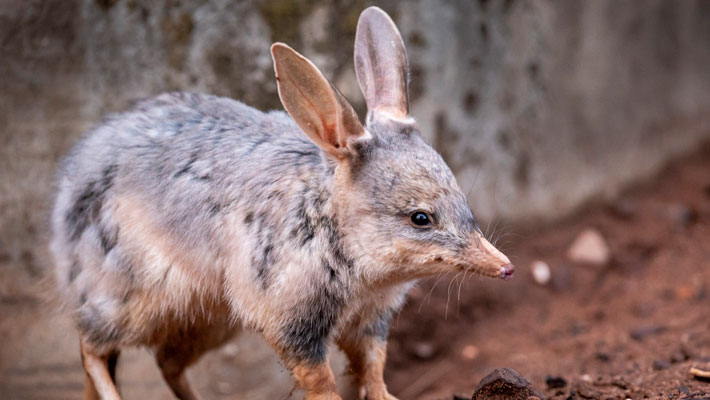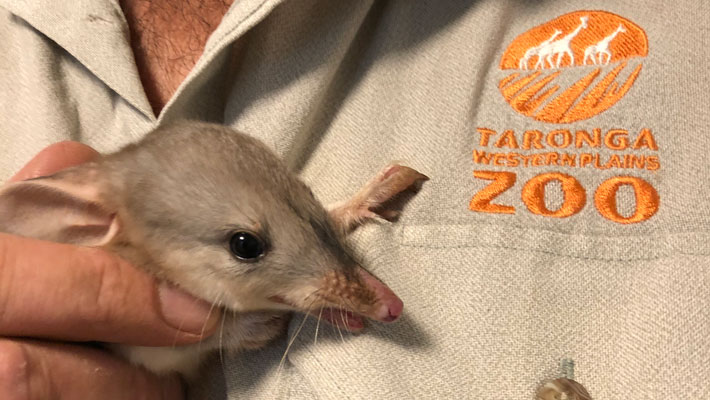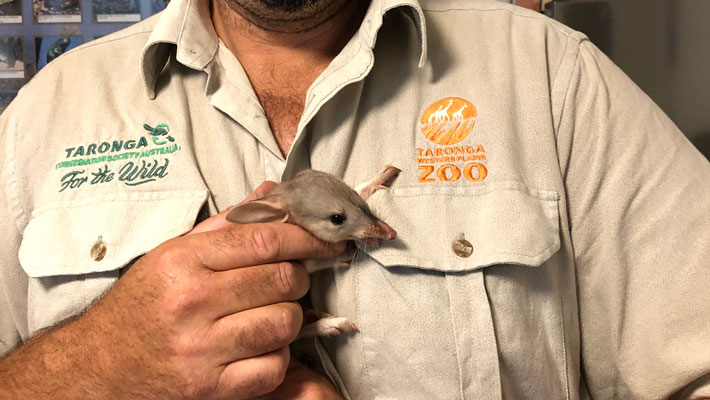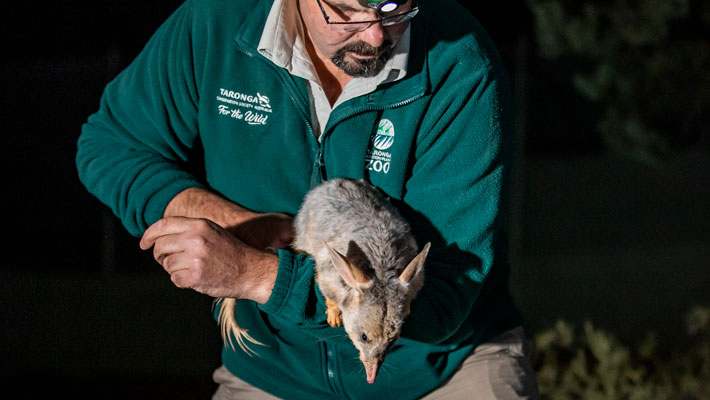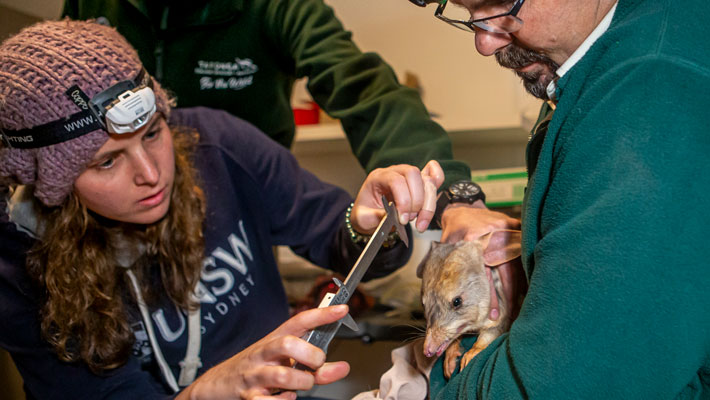Taronga is quickly becoming a breeding hub for Greater Bilbies, helping bring the bilby back to NSW!
In mid-October 2019, keepers released the first Greater Bilbies into the Taronga Sanctuary – a 110-hectare conservation and breeding site at Taronga Western Plains Zoo (TWPZ) in Dubbo – marking a huge milestone in this project which aims to help save the species from extinction. The initial release consisted of five females and four males who were health checked and had tracking devices fitted to ensure accurate monitoring, while 11 further individuals joined them within the following few weeks.
“We released our first cohort of bilbies into the site and they’re going to kick start our breeding population where we aim to breed large numbers of bilbies to send out to rewilding sites around NSW and beyond,” said Andrew Elphinstone, Manager, Conservation and Recovery Programs.
A hundred years ago, Greater Bilbies were common in many habitats throughout Australia, from the dry interior to temperate coastal regions. Habitat loss and competition with introduced animals have seen bilby numbers dramatically reduced over the last 100 years and today this iconic species is nationally listed as vulnerable and presumed extinct in NSW. The small mammals now occur in fragmented populations in mulga shrub lands and spinifex grasslands in the Tanami Desert of the Northern Territory, in the Gibson and Great Sandy Deserts and the Pilbara and Kimberley regions of Western Australia, and the Mitchell Grasslands of south-west Queensland
Taronga sanctuary
The fenced sanctuary at TWPZ is free from predators including foxes and feral cats. The purpose of this incredibly important site it to breed a large number of genetically and behaviourally robust bilbies for release to the wild in NSW and beyond, starting with Sturt National Park (as part of the Wild Desert project delivered in partnership with UNSW), in the arid north-western corner of NSW. Taronga’s unique combination of skills across animal husbandry, genetics and conservation management are critical to the success of this ambitious program.
“Unfortunately, there are not enough bilbies to go around, which is why Taronga has established this 110-hectare breeding sanctuary to breed large numbers of bilbies to go back into national parks,” Elphinstone says.
According to Taronga Zoo CEO, Cameron Kerr:
“The Taronga Sanctuary project aims to become the largest breeding program for the Greater Bilby – literally the engine room enabling this species to thrive at rewilding sites around NSW."
“The Taronga Sanctuary will produce Greater Bilbies to be repopulated right across NSW is both exciting and critical to the long-term survival of this uniquely Australian species,” says Cameron.
Ecosystem engineers
There’s a lot more to ongoing bilby conservation efforts than just saving the species itself. “Bilbies are really important in the environment, they’re considered ecosystem engineers,” Elphinstone explains. “By building their burrows they turnover huge amounts of soil which helps nutrient cycling, water penetration, seed germination, and creates habitat for other species. So often with these big rewilding projects, particularly in semi-arid areas, bilbies are the first species to go back in,” he adds. “Bilbies are an important part of traditional indigenous culture in the deserts of central Australia."
Bilby breeding success
Since the release in October 2019, the program is off to a great start. The first Greater Bilbies released into the Sanctuary are given routine checks to determine if the females are carrying pouch young. In December 2019, the first joeys were detected, with two on the first five females released carrying young. Fittingly, by Easter this year, that number had risen to an incredible 19 joeys, including five who are already independent from their mother’s, an incredible result in just six months since the initial release.
"Now that Dubbo has received some good rainfall over the past three months and the habitat in the sanctuary has improved significantly, we are seeing the bilbies gaining weight and all are now breeding," keeper Steve Kleinig said.
"Once mature, greater bilbies can breed up to four times a year if the conditions are favourable."
Plans are underway to add more adults to the group later this year to increase the genetic diversity of the group before a return to the wild!
Meet the species
Read some fast facts about this incredible and unique native Australian species.
Bilby appearance, behaviour, diet, size and more
| Scientific name | Macrotis lagotis |
| Appearance | Bilby fur is blue-grey with patches of tan and is very soft. The tail is black and white with a distinct crest |
| Behaviour | Bilbies emerge from their burrows after twilight and spend the majority of the night foraging |
| Diet | Omnivore |
| Habitat | Now restricted to arid regions and habitats because of the spinifex grass and acacia shrub |
| Gestation | Bilbies have a very short gestation period of about 12-14 days – one of the shortesta mong mammals |
| Size | Weight: maximum 2.5kg(male) and 1.1kg (female) Head and body length: 30-55cm (male) and 29-39cm (female). Tail length:20-29cm (male) and 20-27cm (female) Weight: maximum 2.5kgc(male) and 1.1kg (female) |
| Status | Presumed extinct |
| Commonwealth status | Vulnerable |
